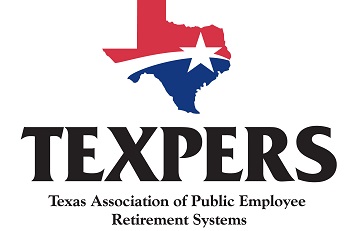They juxtaposed it with an article by Josh McGee of the Laura and John Arnold Foundation.
At the end of the day, it's a matter of definition of "control." In TEXPERS view, the Legislature's history of involvement with local pension funds demonstrates that it only passes changes to statute when all parties are in agreement. McGee would have the general public believe that the Legislature takes a much more active role than they really do.
Here is Patterson's op-ed in full:
Local control
would make Houston pension fund problems grow
By Max Patterson
Houston
voters would do well to consider the true meaning of “local control” for its
three public employee pension funds. Those advocating the radical change of
giving city council absolute power over pension system dynamics seem
disconnected from reality.
The
Greater Houston Partnership and Laura and John Arnold Foundation, along with
the Texas Public Policy Foundation in Austin, have been tag-teaming a tale
about how 12 pension funds in seven of Texas’ largest cities interact with the
Legislature. They claim, misleadingly, that legislators control the pension
systems through state laws. Eliminating those laws, they say, would return
final decision making authority over benefit calculations, contribution
requirements and governance to the city council members and mayors who are
directly elected by taxpayers in a given locale.
This narrative is
misleading. No Texas legislative committee has ever required its own changes to
Houston’s, or other cities’, pension funds. Having such power and exercising it
would fall within the normal definition of “control.” If the Legislature truly
controlled the 12 pension systems in statute, it could theoretically take over
Houston’s entire budget process to fully fund the pension systems or
unilaterally make pension benefit adjustments. That has never happened.
The
authority needed to alter statutes already lies squarely with city
council. The kicker is that a council and mayor has to work collaboratively and
constructively with city staff, the pension fund board, current municipal
employees, firefighters, police and their retirees, and actuaries to develop
proposals that meet fiscal and fiduciary restraints. That’s a lot of work for a
city council; usually they defer such time-consuming, detailed effort to the
pension board, the mayor’s office, or the city manager. Only then, if the
council votes to approve a proposal others have created, will it get to the
full Legislature for review and vote.
The
honest observer saw this dynamic in February when Mayor Annise Parker and the
firefighters’ pension system, after years of acrimonious exchanges, came to an
agreement they wanted the Legislature to consider. City council, feeling left
out of the discussions, convened a special meeting in March to discuss the
proposal. Two council members left the meeting, preventing a quorum from
voting. The move worked. The bill died. Legislators want all local
stakeholders to be in consensus about a proposed change before it gets anywhere
close to a vote.
This occurs by design.
Decades ago the 12 pension systems and their city councils agreed that the
Legislature would be a good check-and-balance to the contentious process
surrounding pension fund changes. The pension funds were concerned about the
budget dysfunction that can occur when temporary politicians seek money for
constituents’ pet projects. Similarly, city councils wanted to ensure that
pension benefits would not break the budget. By placing them in statute, and
minimizing the ability of the mayor or council to stack a pension board, they
created a push-pull tussle between themselves, with the Legislature as
backstop. In contrast to local pension systems in other states, the
conservative, common sense safeguards in the Texas design have worked extremely
well.
It
would be far more constructive for Houston’s leaders to consider the counsel
Moody’s Investor Services offered in July: “A sustainable plan to manage the
costs, while balancing the budgets, and meeting full required contributions
will be key credit considerations going forward.” That last piece of advice
speaks volumes.
If
Houston city council had over the past decades provided the entire amount its
pension systems needed to generate appropriate investment returns then we would
not even be having this discussion. The systems’ unfunded liabilities would be
lower by hundreds of millions or even billions given the compounding effects of
the pension funds’ historic rates of return. The Houston Municipal Employees
Pension System, which administers the pension funds for retiring librarians,
911 operators, budget and legal analysts, sanitation workers and other
municipal employees, had a 9.19% average annual rate of return over the last
20-year period, well above their assumed rate of return and one of the highest
of all Texas pension systems. The Houston Police Officers Pension System, with
an 8.78% average annual return over 20 years, handily beat their assumed rate
of return and also performed among Texas’ best local pensions.
Pension
systems are complicated. Willfully twisting terms and skewing common
understandings to achieve a short term political victory will create unintended
consequences. The stakes are high. Houston’s pension funds distribute tens of
millions of dollars each month for the retirement benefits earned by tens of
thousands of retirees, most of who live in Harris County and Texas. Such change
would disrupt the predictable stimulus provided to our economy.
Max Patterson is the
executive director of the Texas Association of Public Employee Retirement
Systems.
